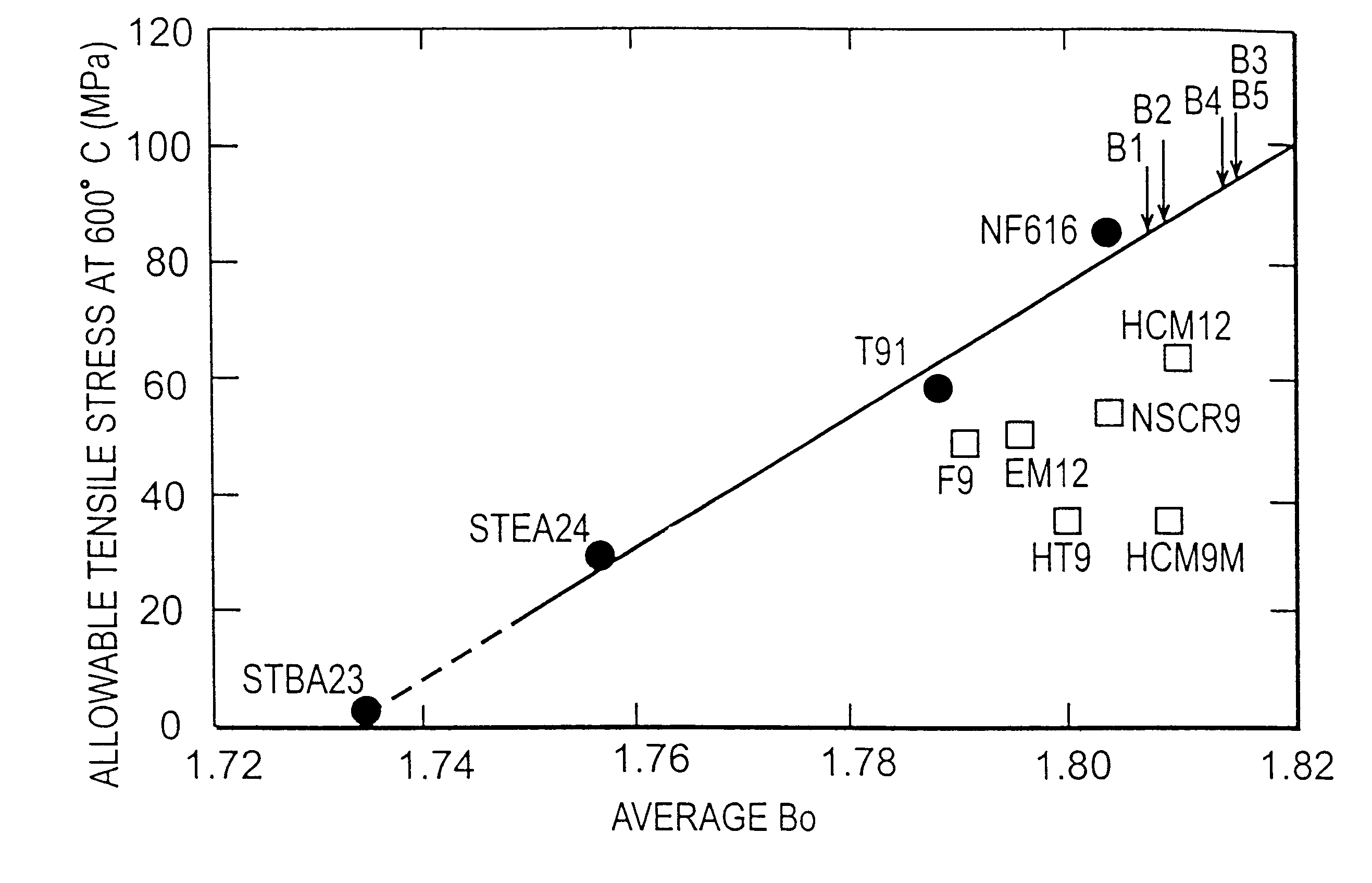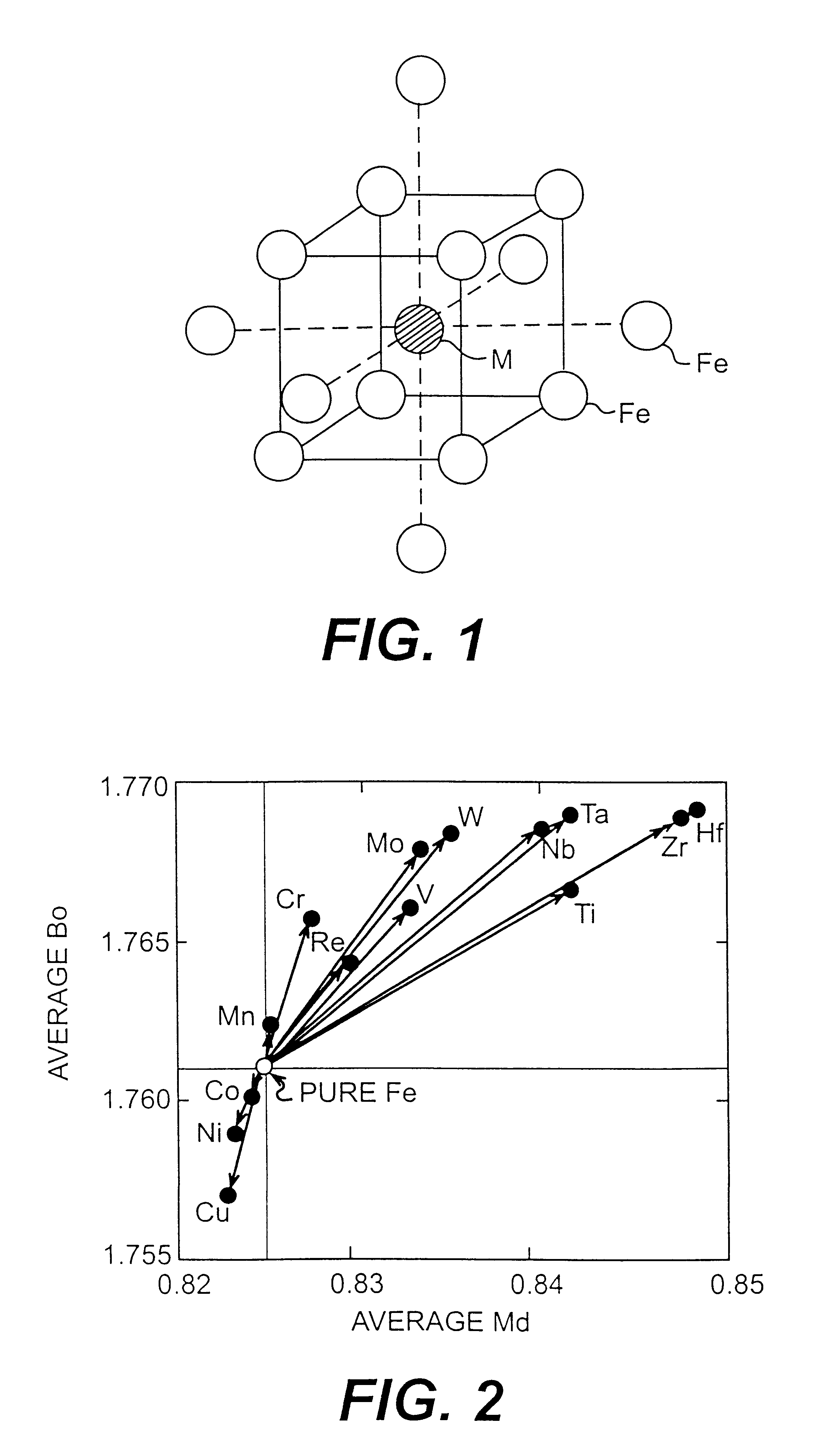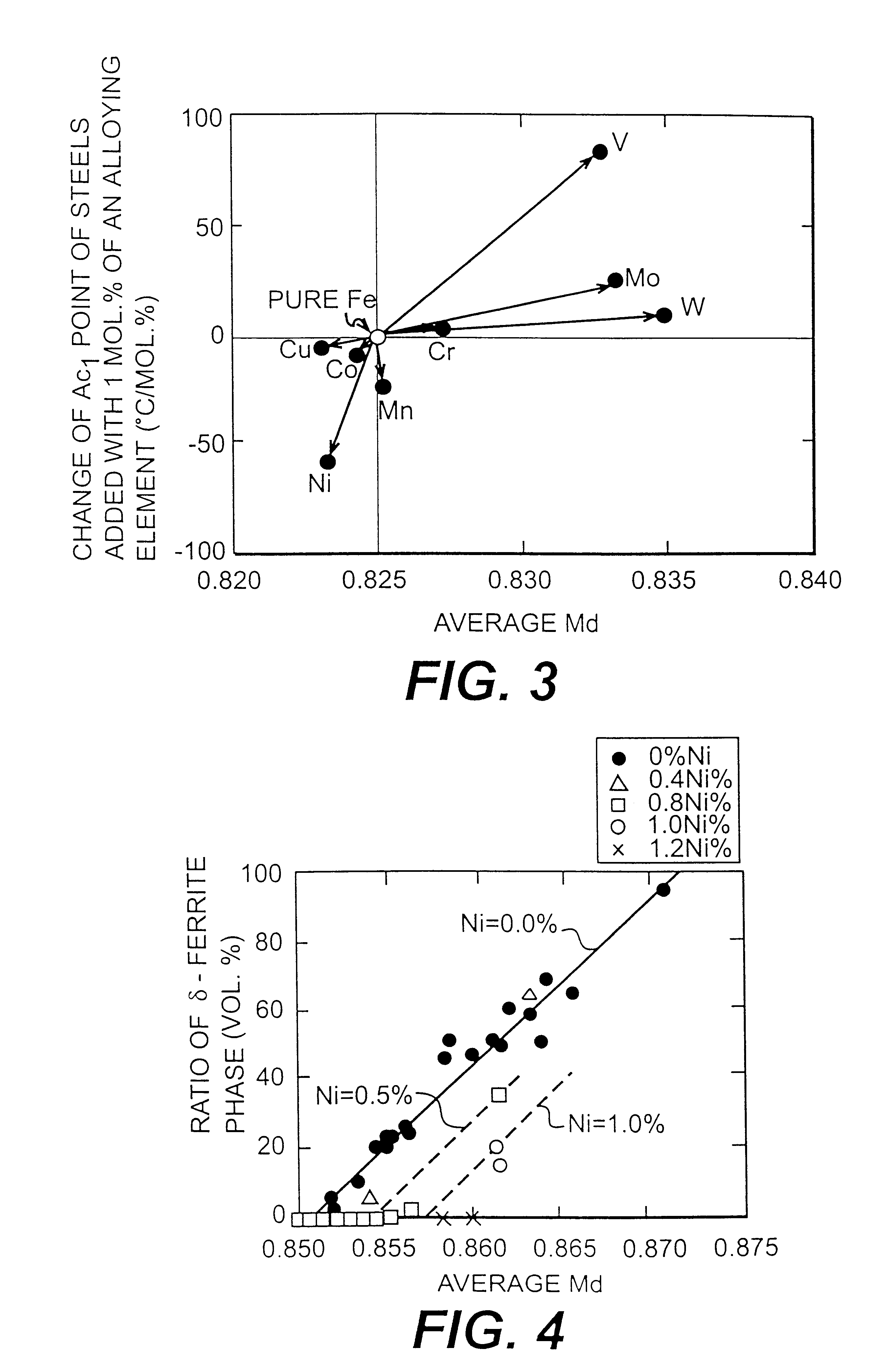Ferritic heat resistant steels
a heat-resistant steel and ferritic technology, applied in the field of ferritic heat-resistant steels, can solve the problems of reducing the reduction area of creep rupture, requiring a great deal of experimental work, and requiring a great deal of labor, time and cost for the development of new steels, such as the steels in figs. 1 and 2
- Summary
- Abstract
- Description
- Claims
- Application Information
AI Technical Summary
Benefits of technology
Problems solved by technology
Method used
Image
Examples
example
1. Preparation of Test Specimens
(1) T-series Steel Specimens
Six steels having different compositions as shown in FIG. 14 were melted in a high frequency vacuum induction furnace and cast into six ingots each having a weight of 50 kg. Each ingot was heated to a temperature of 1170.degree. C., hot forged into a billet having a 130 mm thickness and a 35 mm width. The obtained billet was normalized by keeping it at 1100.degree. C. for 5 hours and then air cooled, followed by an annealing treatment wherein the billet was kept at 720.degree. C. for 20 hours and then air cooled.
After that, the following heat treatment steps simulate the heat cycle suffered by the center zone of an actual turbine rotor.
(1) keeping at 1070.degree. C. for 5 hours and oil quenching (hardening)
(2) keeping at 570.degree. C. for 20 hours and air cooling (first tempering)
(3) keeping at T.degree. C. for 20 hours and air cooling (secondary tempering)
Specimen "TO" is the aforesaid conventional heat resistant turbine ...
PUM
| Property | Measurement | Unit |
|---|---|---|
| Fraction | aaaaa | aaaaa |
| Fraction | aaaaa | aaaaa |
| Fraction | aaaaa | aaaaa |
Abstract
Description
Claims
Application Information
 Login to View More
Login to View More - R&D
- Intellectual Property
- Life Sciences
- Materials
- Tech Scout
- Unparalleled Data Quality
- Higher Quality Content
- 60% Fewer Hallucinations
Browse by: Latest US Patents, China's latest patents, Technical Efficacy Thesaurus, Application Domain, Technology Topic, Popular Technical Reports.
© 2025 PatSnap. All rights reserved.Legal|Privacy policy|Modern Slavery Act Transparency Statement|Sitemap|About US| Contact US: help@patsnap.com



